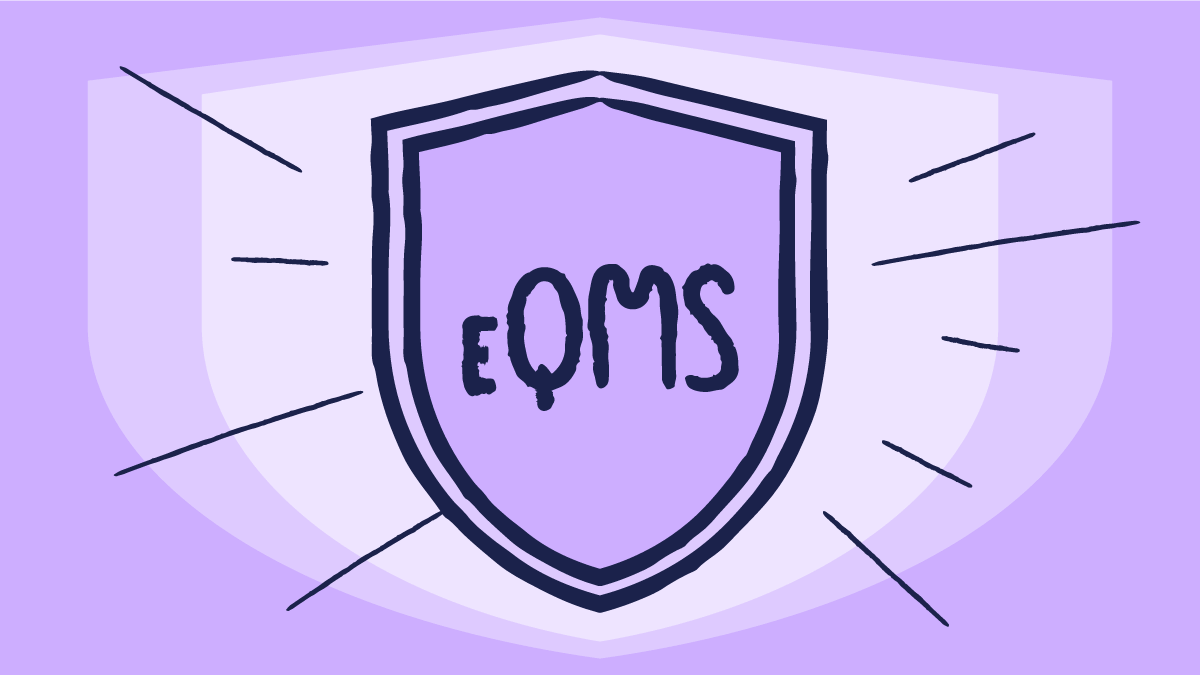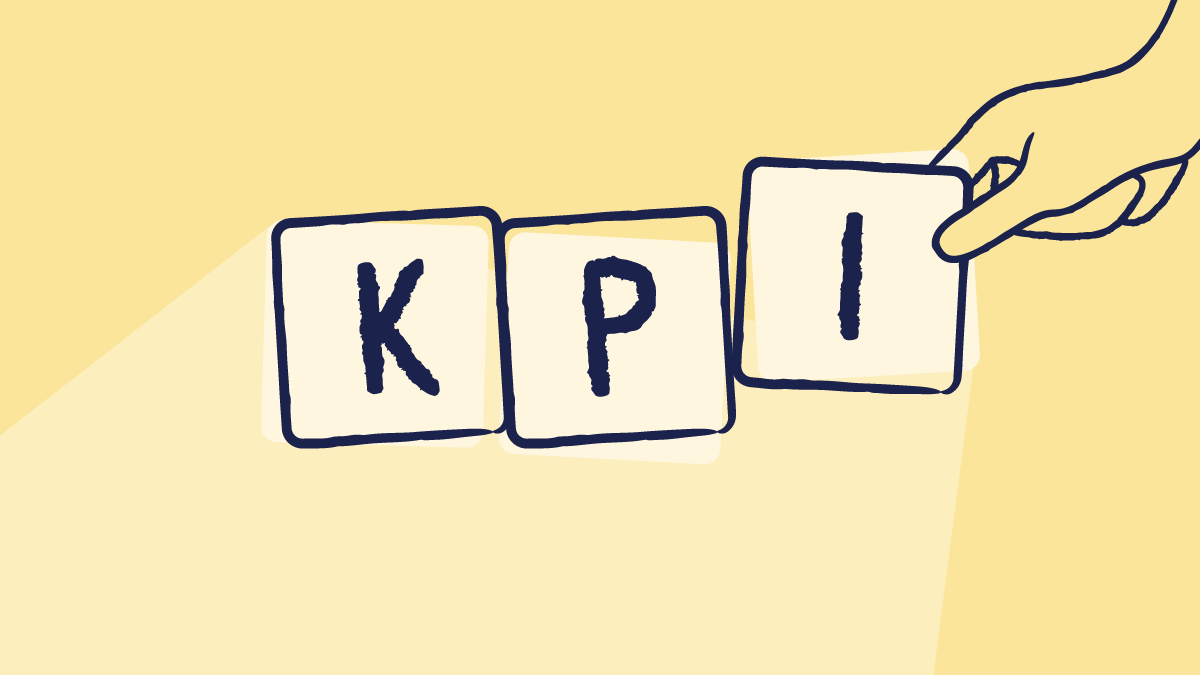
In the life sciences industry, the concept of quality transcends mere compliance and enters the domain of strategic business importance. The cost of quality, a pivotal communication tool, was profoundly emphasized by Philip Crosby, a titan in the quality field.
Crosby introduced the term “price of nonconformance,” shedding light on an often-overlooked truth: Organizations inadvertently choose to pay for poor quality, which can lead to serious financial consequences that are far from insignificant.
For many organizations, true quality-related costs can add up to about 15% to 20% of sales revenue, with some even reaching an alarming figure of 40% of total operations.
For growing companies, a general rule of thumb suggests that the costs of poor quality typically account for about 10% to 15% of operations. These figures are not just numbers on a balance sheet; they are powerful reminders of potential improvement and growth.
In this article, we will explore the layered nature of the cost of poor quality, its implications, and the strategies to mitigate it, thereby unlocking new pathways for organizational success and sustainability.
By the end, you should have a clear understanding of “What is CoPQ?” and “How to reduce CoPQ?”
Let’s dive in!

What is CoPQ?
So, what is CoPQ? A company's cost of poor quality refers to the financial loss it incurs due to providing poor quality products or services to its customers. These include products with errors that need rework or lead to failure in the field.
Defects that occur before the product is delivered to the customer should be added to the manufacturer's costs. A defect that occurs after the product has been delivered to the customer should also be charged to the customer and the producer.
Scilife Tip:
There's a silver lining: Effective quality improvement programs, rooted in stringent standards such as ISO 9001, ISO 13485, and FDA CFR 21 Part 820, can dramatically reduce these costs. You can transform a loss source into a strategic asset by addressing the root causes of nonconformities and embedding quality into every stage of operations.
The differences between CoPQ, CoGQ, and CoQ
You know what CoPQ is, but do you know the difference between CoPQ, CoGQ and CoQ?
There is a common misconception that CoPQ is the main focus of quality management.
However, this disproportionate focus on CoPQ can lead to a narrow view of the overall quality, leaving out the strategic benefits of investing in the cost of quality.
As a QA professional working in the life sciences industry, it is paramount that you thoroughly understand the differences between the total cost of quality (CoQ), the cost of good quality (CoGQ), and the cost of poor quality (CoPQ).
The total Cost of Quality is the umbrella term that encompasses CoGQ and CoPQ.
By understanding and balancing these two aspects of CoQ, organizations can not only mitigate the risks and costs associated with poor quality but also build a robust foundation for continuous quality improvement.
What is CoGQ (Cost of Good Quality)?
The Cost of Good Quality refers to the proactive investments made to prevent poor quality, which includes costs associated with preventing failures before they occur and appraising the quality of products or services. These costs can be increased through quality planning, training, preventive maintenance, and early design reviews.
What is CoPQ (Cost of Poor Quality)?
What is CoPQ compared to CoGQ? CoPQ is reactive in nature and encompasses the costs that materialize only after poor quality has occurred. CoPQ is often more visible and tangible, as it directly affects customer satisfaction, company reputation, and revenue streams.

Benefits of measuring Cost of Poor Quality (CoPQ)
If you have landed on this article hoping to understand how to reduce CoPQ, know that this is, ironically, one of the main benefits of measuring cost of poor quality: By measuring it, you’ll be able to reduce it.
Here are the main benefits of measuring CoPQ against the total cost of quality to fix issues and discrepancies:
- Reduce the total cost of the product and lead time.
- Satisfy customers with the quality of the product.
- Optimize sources and identify process waste.
- Diffuse the continuous improvement culture by engaging employees.
- Make profits that are driven by quality.
- Provide key indicators that are desired by management.
Also, it is worth mentioning that the timing of error detection significantly influences CoPQ:
- Early detection: Costs are lower. Repairs are usually simple, tools are readily available, and fewer departments are involved.
- Mid-process detection: Costs rise. Repairs may require disassembly, involve multiple departments, and demand more labor, time, and coordination.
- Post-delivery detection: Costs skyrocket. Coordinating repairs with customers is complex, time-consuming, and resource-intensive.
Disadvantages of not measuring CoPQ against total CoQ
Now you know the benefits of measuring the cost of poor quality. But what happens when you disregard it?
When companies neglect to single out CoPQ, they are also neglecting to understand the real causes behind bad quality, like dodgy processes, a quality system with siloed elements, poorly trained staff, and more.
This makes quality look very expensive in the eyes of management, who will become more reluctant to invest in QA initiatives.
It can also have serious consequences for the business, such as:
- Financial loss: Unnoticed poor quality costs accumulate, leading to sustained financial erosion.
- Customer dissatisfaction: Defective or inconsistent products lead to loss of customer trust, which competitors can take advantage of.
- Redundant spending on resources: Organizations overcompensate by adding more inspection and control, instead of resolving root causes.
- Program delays: Poor quality leads to repeated iterations, missed deadlines, and delivery setbacks.
- Demotivated associates: Having to repeatedly fix the same problem to no avail can demotivate team members, leading to burnout.
- More controls and bureaucracy: Instead of solving problems systematically. This can slow down workflows and reduce agility.
- Reputational damage: Persistent quality problems erode external perception of the brand.
CoPQ can be divided into 2 categories: internal failure cost and external failure cost.
Internal failure costs
Deficiency costs can be found before the customer receives the product or service. Fixing defects that occur before delivery incurs costs for:
- Scrap: Defective product or material that is not repairable, usable, or sellable.
- Waste: Unnecessary work or stock because of errors, poor organization, or miscommunication.
- Reworking: Change the defective product or material to achieve the required quality standards.
- Analyzing failure: Determine what caused the product or material to fail.
- Retesting: Reanalyze the product to ensure that it can achieve the required quality standards.
- Rejecting raw or in-process material: Decide whether the product complies with required quality standards or not.
External failure costs
Deficiency costs can be found after the customer receives the product or service. Fixing defects discovered by the customer incurs costs for:
- Repairs and servicing: Can be applied to returned and field products.
- Warranty claims: Can be replaced under a guarantee.
- Complaints: Handling and servicing customer complaints.
- Returns/replacements: Handling and investigating recalled or rejected goods, including the cost of transport.
Other external failure costs include customer visits, penalties, loss of goodwill, etc.
The Juran trilogy diagram
The Juran Trilogy diagram is a structured way to identify, control, and permanently reduce the costs of poor quality.
It illustrates the three key processes for managing quality: Quality planning, quality control, and quality improvement.
It serves as a framework to proactively achieve and maintain quality, involving identifying customer needs, controlling processes against established goals, and improving performance to unprecedented levels.

As we can see, the Juran trilogy diagram shows the before and after difference of quality improvements.
The level of chronic waste (CoPQ) is built into the concept of “it was planned that way.” Quality improvements can reduce the zone of quality control.
Also, the infographic shows a “sporadic spike,” which is a sudden increase in waste. This spike can occur unexpectedly because it arises from unexpected sources. Personnel eliminate the spike and restore the previous level of chronic waste. This action cannot permanently solve the problem, but quality improvements should be made to decrease the level of waste.
The following “Juran Trilogy how-to” infographic outlines the Cost of Quality (CoQ) identification and improvement process for both organizations and individual processes:

Source: Juran’s quality handbook / Joseph M. Juran, co-editor-in-chief, A. Blanton Godfrey, co-editor-in-chief. — 5th ed.
- CoQ identification process: This involves three key steps: identifying CoQ work, collecting CoQ data, and analyzing CoQ information to motivate and prioritize process improvement projects.
- Utilizing CoQ information: The analyzed CoQ information serves as input for developing or enhancing quality improvement plans, setting CoQ reduction objectives, and implementing these plans.
- Process improvement: The process concludes with establishing the need for and selecting processes for improvement, followed by identifying and prioritizing improvement opportunities within the chosen processes.
How to implement CoPQ in my quality strategy
So, you’re wondering: how can I implement CoPQ in my quality strategy?
Although many organizations have found it useful to divide the costs into two categories and then split them into subcategories such as internal failure, external failure, appraisal, and prevention, this structure may not apply to all processes.
The organization and the QA team should decide on a structure that suits their needs best.

To decide on a structure that suits your organization’s unique nature, you should keep in mind a few items:
- Customization of cost category definitions: Tailoring definitions to fit the specific needs of an organization involves various functions in the process.
- Prioritization of the failure and appraisal costs: Focusing on failure cost elements for significant cost reduction and customer satisfaction improvement, along with appraisal cost management.
- Management involvement and data collection agreement: Ensuring upper management's involvement and consensus on cost categories before beginning data collection.
- Recognition of overlooked poor quality costs: Identifying traditionally accepted costs, such as redesign and process changes, as part of the cost of poor quality.
- Handling of controversial cost categories: Strategically addressing controversial costs, focusing on major areas for potential reduction, and avoiding unnecessary disputes.
- Balance between precision and practicality: While detailed breakdowns of cost categories can be valuable, the system should remain practical.
- Inclusion of opportunity costs: Don’t overlook opportunity costs; lost sales from delayed launches, or the inability to pursue new business due to wasted resources.
- Benchmarking against industry standards: This helps identify gaps and ensures the organization remains competitive in how it views and addresses quality costs.
- Digital tools and data integration: Consider how an eQMS could automate cost tracking and integrate CoPQ data into business dashboards, reducing manual effort and increasing accuracy.
Justifying your investment in quality improvement
The justification for investing in quality improvement is multifaceted. The benefits are in the form of reduced costs and enhanced business opportunities, which can be categorized into four main areas:
- Reduced the cost of errors
- Improved process capability
- Reduced customer defections
- Increase in new customers
Then of course, there’s the return on quality, current and prospective:
How to implement CoPQ in my quality strategy? Return on quality (ROQ) calculation
ROQ is a financial metric used to evaluate whether quality initiatives deliver a sufficient return on investment (ROI).
Unlike a simple cost-benefit analysis, ROQ specifically isolates the financial impact of quality improvements, including both cost savings and revenue effects. At its core, the ROQ formula follows the ROI logic:

- Financial Benefits: Cost reductions (hard savings) + Revenue increases (soft gains)
- Cost of quality Initiative: Direct investment in quality improvement (training, process redesign, new tools, audits, etc.)
If ROQ > 0 (positive), the initiative adds value. If ROQ < 0, the initiative costs more than it delivers.
For instance, this formula can be applied to justifying investment in an eQMS, which can help QA teams to systematize the implementation and monitoring of CoPQ metrics.

How to reduce CoPQ, step by step
The moment you’ve been waiting for: You’ll now get expert insights into how to reduce CoPQ.
This is how you can get started on reducing CoPQ:
1. Define quality goals and objectives: Reducing defect rates, improving on-time delivery, cutting warranty claims, or boosting customer satisfaction… Defining these upfront ensures that your CoPQ metrics are aligned with strategic business priorities.
2. Gather and assess resources: Take stock of the tools, systems, and processes already in place. This includes QMS systems, equipment, and personnel. Identify gaps. E.g., if data collection is manual and inconsistent, investing in automation tools may be necessary.
3. Collect data for each CoPQ category: Break down CoPQ into internal failure costs, external failure costs, appraisal costs, and prevention costs. Collect data systematically across departments, including internal and external failure, appraisal, and prevention.
4. Validate with finance: Work closely with the finance department to confirm that data is reliable and categorized correctly. This step ensures credibility and prevents disputes later. Finance validation also makes it easier to present CoPQ results to senior leadership.
5. Prioritize and implement corrective actions: Analyze the data to identify the largest cost drivers. Use a Pareto analysis (80/20 rule) to focus on the most significant areas. Corrective actions could include:
-
Periodic quality audits: Detect recurring issues before they escalate.
-
Streamlining inspection processes: Eliminate redundant checks while ensuring accuracy.
-
Mistake-proofing: Design processes or tools that make errors immediately visible.
6. Compare before and after implementation: Establish a baseline CoPQ before corrective actions, then measure again after implementation to highlight the effectiveness of interventions, validate the effort, and provide hard evidence of improvements.
7. Report CoPQ: Follow the project-by-project approach and apply CoPQ to each project. Collect data that diagnose the problem and track change.
Then:
Create a scoreboard to track categories, reports, and metrics; if a scoreboard is already in place, review previous scoreboard data.
- Look beyond the assertions of advocates; look at the realities derived from experience.
- When the categories of the scoreboard are ready, collect and summarize the data, establish base comparisons, and report results. Summarize the data by:
- Product, process, component, type, or other defect concentration pattern
- Organizational unit
- Category
- Time
8. Communicate results to management: Prepare a presentation for leadership, showing not only the cost reductions but also the business value, such as improved customer satisfaction and faster cycle times. Highlight both CoPQ reductions and improvements.
Recommended learning:
How to reduce CoPQ: Tips and strategies
Implementing an integrated quality management system (QMS) is a foundational step in reducing quality costs.
Here are some strategic approaches and tools to effectively manage and reduce the cost of poor quality:
- Implement a robust QMS to streamline quality processes, ensure compliance, and reduce the likelihood of quality failures.
- Implement an effective Corrective and Preventive Action (CAPA) module to identify problems, prioritize them with a risk-based approach, and promptly address them.
- Implement an effective Change management module to assess the cost and impact of changes, ensuring that decisions are data-driven and that transitions are smooth
- An integrated eQMS with related processes like Employee Training and Document Control simplifies and streamlines change management.
- Apply preventive measures such as employee training, quality planning, and early trend reviews.
- Conduct regular quality audits and inspections to identify potential issues before they become costly problems.
- Use data analytics to identify trends and areas of improvement to make informed decisions that can reduce both CoGQ and CoPQ.
- Foster a culture where employees are aware of the importance of quality and are engaged in maintaining high standards.
- Use supplier management tools to evaluate and improve supplier performance.
- Regularly analyze customer feedback to understand customer needs and expectations to improve product quality and reduce the likelihood of customer defections.
- Use real-time data and alerts to address potential issues preemptively.
- Use audit management tools to identify and prioritize strategic follow-up actions.
- Recognize the hidden costs, such as reduced customer loyalty and brand reputation damage.
Conclusion
Establishing a quality cost system is just the beginning of a journey. Once you’ve implemented some of these strategies, your organization's mission, goals, and objectives will be positively affected.
The life sciences industry is evolving, so you should shift your focus from traditional quality management to more holistic approaches, such as continuous improvement and long-term benefits, to increase sales revenue and market share.
FAQs
What is CoPQ and what are the 4 elements of cost of quality?
Quality-related activities that incur costs may be divided into prevention costs, appraisal costs, and internal and external failure costs. These costs fit into two categories: Cost of Good Quality (CoGQ) and Cost of Poor Quality (CoPQ).
How do you calculate CoPQ?
To calculate the cost of poor quality (CoPQ), you sum the costs of Internal Failures (like rework and scrap) and External Failures (like warranty claims and returns) over a specific time period, resulting in the formula: CoPQ = IFC + EFC. This is how you calculate CoPQ.
Which strategy is most effective to drive CoPQ down?
The most effective way to reduce the cost of poor quality (CoPQ) is through a combination of strategies: implementing a strong Quality Management System (QMS) to provide structure, fostering continuous improvement practices to eliminate waste and inefficiencies, applying effective root cause analysis (RCA) to prevent recurring issues, ensuring supplier quality to avoid defects entering the process, and engaging employees through training to build a quality-focused culture.
Is zero CoPQ achievable?
Is zero CoPQ achievable? No, zero cost of poor quality (CoPQ) is generally considered unachievable for entire organizations because the world is not perfect, and some level of rework or scrap is inevitable. However, the concept of "zero defects" from Total Quality Management (TQM) or Six Sigma encourages organizations to continuously strive for perfection and to minimize failures as much as possible, treating it as an ongoing pursuit rather than a final, achievable state.











